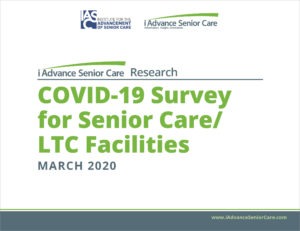The continuing threat of C. difficile infection
Clostridium difficile—also known as C. diff—is a bacterium commonly found in hospitals and long-term care (LTC) settings. Infection can lead to diarrhea, colitis, and other symptoms that can be debilitating and even deadly, particularly in the elderly. In recent years, there have been several reports of infection affecting both individuals and whole groups of patients treated in hospitals and healthcare facilities around the world. Based on available reports, hundreds of thousands of people experience symptoms related to C. diff infection each year, and that number is growing as more virulent and resistant strains emerge.
In September 2006, a group of leading infectious disease experts from around the world participated in a roundtable discussion in San Francisco to review recent research findings and discuss their clinical experiences with C. diff diagnosis and treatment. According to the meeting participants, the infection continues to pose significant challenges to healthcare in hospitals and LTC facilities worldwide. And there is increasing evidence that infection is becoming more common outside of these settings, indicating that community-acquired C. diff infection could become a more serious public health issue in the years ahead. What follows is panel moderator Dr. Dale Gerding’s summing up of the experts’ observations.
Risk Factors
C. diff is known to infect people who are treated with antibiotics for other health issues. The bacterium flourishes when the balance of flora in the intestine is disrupted by antibiotic therapy. “Good” intestinal bacteria—which are killed off by antibiotic therapy along with the “bad”—are the first line of defense against bacterial proliferation. In fact, for most infected patients, the first step in intervention is simply to stop treatment with the antibiotic that may be disrupting the normal balance of flora. As many as 23–30% of symptomatic patients recover by discontinuing their current antibiotic treatment.
Age is a risk factor unto itself. People age 65 and older who are staying in hospitals and LTC facilities are especially vulnerable to infection with C. diff, and the likelihood of infection increases exponentially when older patients are treated with antibiotic therapy. In one study, among patients over age 90 who were treated in hospital environments in which the bacterium was known to be present, 7.4% developed C. diff–associated disease (CDAD) during a hospital stay and, of those, 14% died as a result of the disease.
Diagnosis and Treatment
Although clinicians report that C. diff spores are present in most hospital and LTC settings, many questions remain as to why some infected patients go on to develop symptoms while others do not. In fact, most of those infected—70–90%—experience no symptoms at all. Others go on to develop symptomatic disease and potentially recurrent life-threatening symptoms.
The unpredictability inherent in C. diff infection is caused in part by the uniqueness of each person’s flora profile. Because every person has a unique population of gut microbiota, it can be difficult or impossible to predict what an individual’s reaction to infection will be. There is currently no way to measure or assess the components of normal flora in patients. As a result, it is also impossible to identify the genera and numbers of organisms responsible for the prevention of the bacterium’s proliferation in the colon.
While discontinuation of antibiotic therapy is generally the first-stage treatment, it can also introduce serious risks for some patients. A sudden cessation of treatment might reexpose patients to the infection that therapy was originally intended to treat or prevent. Also, after cessation of antibiotic therapy, treatment typically—and paradoxically—involves the use of antibiotic therapy. This makes C. diff infection one of the few health problems that is both caused by and treated with antibiotics.
There have also been some difficulties recorded with the use of antibiotic therapy to treat this infection. Patients treated with metronidazole, an antibiotic commonly used to treat moderate infection, show a failure rate of at least 10% and a recurrence rate reaching 30% or more. Many experts also express concern that treatment with vancomycin, prescribed for more severe cases of infection, could be contributing to greater drug resistance among other infection-causing organisms. In recent years, there have been many reported cases of selection of vancomycin-resistant Enterococcus species following treatment with the antibiotic.
Challenges
Many infectious disease specialists believe that new and more virulent strains of C. diff could someday represent a potentially serious threat to public health. As researchers explore possible correlations between strain virulence and higher incidences of community-acquired CDAD, clinicians have become particularly concerned about strains of community-acquired CDAD occurring in people who have not previously been treated with antibiotics. A recently discovered epidemic C. diff bacterium produces up to 20 times more toxin than other strains and, even more ominously, appears to be resistant to fluoroquinolone antibiotics such as ciprofloxacin and levofloxacin. This strain has thus far been found only in hospitalized patients and some LTC facilities and not in the community.
According to many physicians who treat infected patients, there is a need for both mandated reporting and a broader sharing of data related to this infection. Many cases of infection and CDAD cases go unreported or are misdiagnosed. In addition, clinicians rarely make distinctions between facility- and community-acquired CDAD, which compounds the challenges of preven-tion. As the rates of both facility- and community-acquired infection incidence rise, active and accurate reporting of infection is failing to keep pace. In the United States, Ohio is currently the only state that requires mandatory reporting of C. diff.
Overall, experts agree that reporting will continue to be inadequate until more information about both facility- and community-acquired disease is collected and available. A coordinated effort to share surveillance data among healthcare and LTC facilities could play an important role in helping to understand the incidence as well as the severity of infection.
Possible Solutions
Heightened awareness of C. diff could help facilities develop more effective preventive strategies to reduce incidences of infection. Most basic strategies call for increased attention to personal hygiene. Because the primary means of transmission seems to be via the hands of healthcare workers and other patients and residents, proper sanitation (handwashing) and barriers (gloves, gowns) are considered by infectious disease experts to be the most effective measures of disease control in healthcare settings. Regular and thorough cleaning of patient rooms with antibacterial cleaning agents—including bleach at a 1:10 dilution in water—can be effective in reducing the presence of C. diff spores in the environment.
According to several roundtable participants, changing the way doctors prescribe antibiotic therapy may also be an important strategy in the effort to combat C. diff in the years ahead. Because CDAD is almost always associated with previous use of antibiotics, and because the continued use of such therapy may be causing resistance in certain bacterial strains, antibiotic treatment should be limited to those cases in which it is absolutely necessary and appropriate.
While treatment focuses largely on the cessation and subsequent initiation of antibiotic therapies, experts agree that an effective non-antibiotic treatment could have a positive impact in fighting infection, especially in cases of recurrent disease. One such therapy could be based on the use of toxin binders, which could act to neutralize the effects of toxin-producing strains long enough to allow for the normal balance of intestinal flora to be restored. Currently, tolevamer, which is being developed by Genzyme Corporation to treat CDAD, is in Phase 3 clinical trials. Tolevamer is being developed as a new, non-absorbed therapy that could be the first non-antibiotic treatment approved for CDAD. Although toxin binders do not eradicate the bacterium, as a non-antibiotic treatment they may make it possible for the “good”—that is, infection-fighting—bacteria to recover from the previous antibiotic therapy and colonize against the invading bacteria.
The Future
Among the target areas for future research is the impact of expanded use of fluoroquinolone antibiotics and proton pump inhibitors in contributing to the spread of C. diff. Researchers are paying close attention to variations in strain virulence and the role of binary toxin production in disease progression. Finally, and perhaps most important, infectious disease specialists should continue to monitor what many suspect to be a steady increase in incidence of community-acquired CDAD—a trend that could have important implications for public health.
Dale Gerding, MD, is an infectious disease specialist at Hines VA Hospital, Hines, Illinois, an expert on C. diff, and the moderator of the roundtable discussion held in San Francisco on September 26, 2006. For more information, please contact Kim Angelastro at (212) 253-8881 or kangelastro@berrypr.com.
To send your comments to the author and editors, e-mail gerding0607@nursinghomesmagazine.com.
Related Articles
Topics: Articles , Clinical , Risk Management











